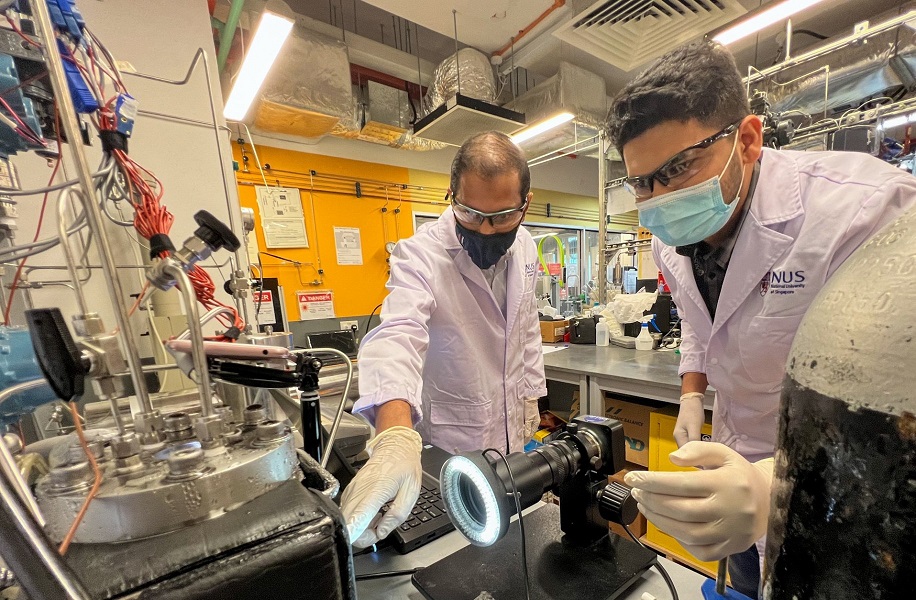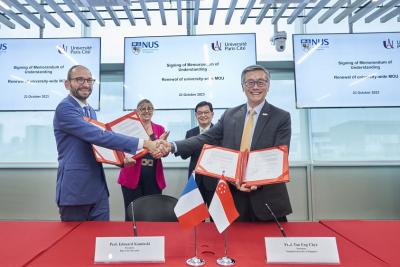Nghiên cứu của NUS cho thấy CO2 có thể được lưu trữ dưới đáy đại dương
Climate change is one of the most pressing challenges facing humanity. To combat its potentially catastrophic effects, scientists are searching for new technologies that could help the world reach carbon neutrality.

Prof Praveen Linga (left) and his team demonstrated the first-ever experimental evidence of the stability of CO2 hydrates in oceanic sediments.
One potential solution that is drawing growing attention is to capture and store carbon dioxide (CO2) emissions in the form of hydrates under ocean floor sediments, kept in place by the natural pressure created by the weight of the seawater above. A major question, however, has been how stable this stored CO2 would be for the extended periods of storage required to keep the carbon in place and out of the atmosphere.
Now researchers from NUS Department of Chemical and Biomolecular Engineering have demonstrated the first-ever experimental evidence of the stability of CO2 hydrates in oceanic sediments - an essential step in making this carbon storage technology a viable reality.
“It's the first of its kind experimental evidence that we hope is going to spur further activity on this technology development,” said Professor Praveen Linga, the lead researcher of the study. The team’s findings - part of a project funded through the Singapore Energy Centre - were first published in scientific journal Chemical Engineering Journal.
Using a specially designed laboratory reactor the NUS team showed that CO2 hydrates can remain stable in oceanic sediments for a period of up to 30 days. Going forward, the team says, the same process can be used to validate the stability of CO2 hydrates for much longer periods.
Xem chi tiết tại đây




















